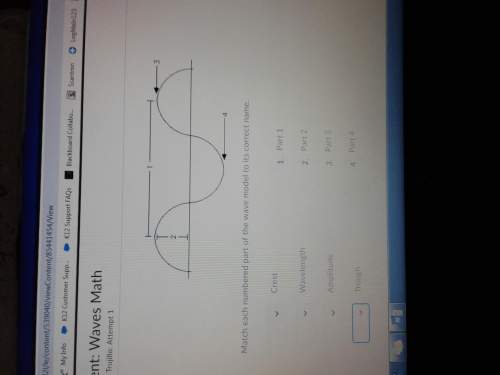
Physics, 07.05.2021 16:20 arizola757
Carbon-14 (14 6C) dating is a method for finding the age of an organic artifact from the quantity of 14 6C it contains. Carbon-14, an unstable isotope of carbon, follows a well-known sequence of decay processes. The decay constants of these processes have been well established, allowing researchers to determine the age of an artifact knowing both the original amount of 14 6C and the current amount.
In the lab, it is relatively easy to measure the activity of a sample and to estimate the mass of carbon in the sample. From these measurements, it is possible to find the age of the sample.
Find the age t of a sample, if the total mass of carbon in the sample is mc, the activity of the sample is A, the current ratioof the mass of 14 6C to the total mass of carbon in the atmosphere is r, and the decay constant of 14 6Cis ?. Assume that, at any time, 14 6C is a negligible fraction of the total mass of carbon and that the measured activity of the sample is purely due to 14 6C. Also assume that the ratio of mass of 14 6C to total carbon mass in the atmosphere (the source of the carbon in the sample) is the same at present and on the day when the number of 14 6C atoms in the sample was set.
Express your answer in terms of the mass ma of a 14 6C atom, mc, A, r, and ?.
t =
An artifact is found in a desert cave. The anthropologists who found this artifact would like to know its age. They find that the present activity of the artifact is 9.25 decays/s and that the mass of carbon in the artifact is 0.100 kg. To find the age of the artifact, they will need to use the following constants:
r=1.2

Answers: 2


Another question on Physics

Physics, 22.06.2019 08:30
An automobile steering wheel is shown. what is the ideal mechanical advantage? if the ama is 8, what is the efficiency of the steering wheel?
Answers: 1

Physics, 22.06.2019 16:00
The solid that is formed and usually sinks to the bottom of a solution is the
Answers: 2

Physics, 22.06.2019 17:30
Aparticle moves in a circle 1.50 m in radius . through what angle in radians does it rotate if it moves through an arc length of 2.50m? what is the angle in degrees?
Answers: 1

Physics, 22.06.2019 23:30
Macy always thought there were only a few hair colors blonde brown and black however when she actually began looking around she saw varying shades of these hair color what is a possible reason for so many different hair colors
Answers: 1
You know the right answer?
Carbon-14 (14 6C) dating is a method for finding the age of an organic artifact from the quantity of...
Questions

Mathematics, 25.04.2021 23:00

History, 25.04.2021 23:00


Mathematics, 25.04.2021 23:00

History, 25.04.2021 23:00





Mathematics, 25.04.2021 23:00


Social Studies, 25.04.2021 23:00

History, 25.04.2021 23:00


Mathematics, 25.04.2021 23:00

Chemistry, 25.04.2021 23:00

Arts, 25.04.2021 23:00


Biology, 25.04.2021 23:00

Chemistry, 25.04.2021 23:00




